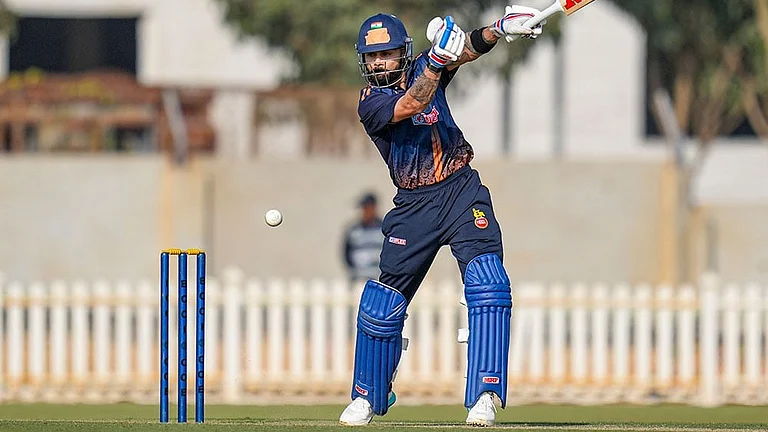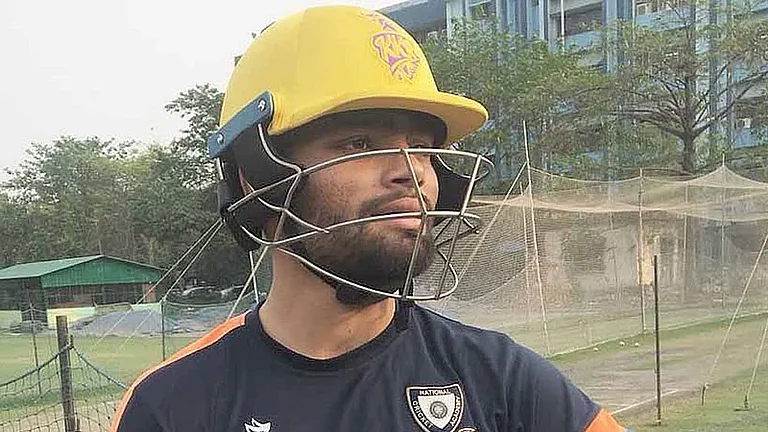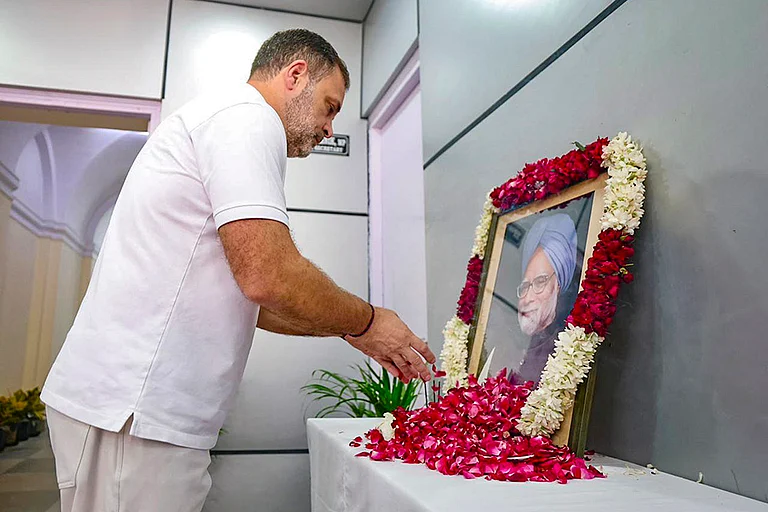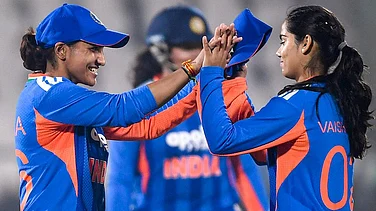What’s common between Manchester City superstar Erling Haaland, World No. 1 tennis player Iga Swiatek and India cricket captain Harmanpreet Kaur (except they are all elite, widely followed athletes)? The trio is among the proponents of nasal-breathing through mouth-taping – an increasingly popular technique sportspersons across many disciplines the world over are adopting at training and beyond. (More Cricket news)
The benefits of mouth-taping are manifold. Athletes typically adopt it to improve endurance, considering breathing through one’s nose requires more effort than doing the same through the mouth. The usefulness of the practice ranges beyond athletic gains, too, and includes enhancing general wellness.
Harmanpreet is arguably the first active India women’s cricketer to practise, and extol the benefits of, mouth-taping at the international level. While batting at the nets during India Women’s ongoing home season, featuring England and Australia, which began last month in Mumbai and Navi Mumbai, she has been spotted taking throwdowns and facing bowlers at training with her mouth taped with a white strip several times.
More often than not, the 34-year-old batting all-rounder has been seen resorting to the tape closer to the end of her batting sessions, which usually last anywhere between 30-45 minutes overall per day. On Friday, the eve of India’s T20I series opener against Australia at the DY Patil Stadium, Harmanpreet revealed that she has reposed her trust in the technique for several months now not only at training but also during bedtime.
“I have been following that method for close to a year and a half now because I have this natural habit of breathing through my mouth, which is not good. So, my [personal] fitness trainer, Sagar Diwan, advised that I try this method out,” Harmanpreet said in response to a question from Outlook India. "I mostly try it out at the nets, but also when I am at home, I put a tape on my mouth, and even while sleeping, so I can breathe through my nose. I think that helps me a lot. That's the only reason why I tape my mouth.”
International breath-training coach Patrick McKeown told The Athletic last September that the practice was not a new fitness fad or sleep hack. “We’ve have been taping mouths for 25 years,” he said. Both Swiatek and Haaland have, however, played an indisputable part in mainstreaming the conversation as have TikTok videos and a growing canon of books on the subject. Joining the duo in the burgeoning line of top-drawer athletes to adopt the method is Harmanpreet, who was named on TIME magazine’s 100 Next and the BBC’s 100 Women line-up in 2023.
“Whenever I used to train with my trainer, Sagar, he would point out my tendency of inhaling through my mouth, and how it's not advisable to do so for not only athletes but non-athletes, too. He advised that when I am batting or doing anything in general, I should consider putting a strip of tape on my mouth, because it would create a better flow and process overall with my breath – both when inhaling and exhaling -- and that it could improve the clarity of my mind and aid in decision-making,” adds the Indian women's team captain.
Among recent instances in the realm of top-flight professional sport, mouth-taping first made headlines last August, when Swiatek of Poland was pictured practising with a strip of tape on her mouth in Montreal. The 22-year-old multiple Grand Slam champion told the media during the Omnium Banque Nationale tournament in the Canadian city that “it’s the way to kind of work on my endurance by not having me run so fast and do extreme things … For sure you can see the difference in how everything you do on the court is getting more and more hard with that tape on your mouth.”
A few days later, 23 year-old footballing wunderkind Haaland revealed he sleeps with his mouth taped shut. “I think sleep is the most important thing in the world. So, to sleep good, simple kind of things – blue blocking glasses, shutting out all the signals in the bedroom, I think is really important,” he said on Logan Paul's ‘Impaulsive’ podcast and YouTube show. “[It’s about] small things. I think to do a lot of things is not good but to do small things every single day for a longer period really pays off.”
Harmanpreet, Outlook India understands, has grown so comfortable with breathing through mouth-taping that, according to her own assessment, she would be at ease if required to have her mouth taped through the entire course of a day and rely solely on breathing through her nose.
As far as the Indian women’s cricket team goes, no other playing personnel on it is known to be a practitioner of the technique. Harmanpreet, however, said that her unique training method piques the interest of her colleagues every now and then
"A couple of my team-mates have asked me why I have my mouth taped at training and the benefits I stand to gain from it,” Harmanpreet, who also captains the Women’s Premier League (WPL) side Mumbai Indians, explained. “My personal view of it is that my breathing technique wasn't right and meditation is something I am usually not able to do much, so this nasal-breathing process feels like a similar, natural way of doing meditation, which requires you be mindful of breathing in and out of your nose
"So, I feel this is the easiest way to do that, so my trainer came up with this advice, and it's been very beneficial to me. Whenever I feel I need to do it more regularly, I make sure to incorporate it into my nets training."
Like Haaland, Harmanpreet, too, applies tape on her mouth as part of her bedtime routine to assist the passage of air through the nasal route.
"Whenever I feel any discomfort with my breathing patterns, I try to sleep with a mouth taped," said Harmanpreet.
This is not the first out-of-the-box element Harmanpreet, who has nearly 300 caps from her near-15-year-long international career, has integrated into her training regimen in recent years, though. One of the most fearsome big-hitters in the women’s game, she memorably – and for several months – used a golf club as part of her warm-up drills ahead of batting, as was notably in view during the 2022 Birmingham Commonwealth Games, where she led the Indian cricket team to a historic silver medal.
The equipment, however, has ceased to be a staple in her training routine over recent months.
"I encountered some back issues some time back, so I discontinued using the golf club,” Harmanpreet said. “The idea behind using it in the first was to help with my hand swing. But it's quite heavy. It's not a normal golf club; it's one that's used at practice. So, because of the troubles I was having with my back, I stopped using it.
“It's still in my kit bag, but I have not used it in the past 6-7 months. I have been looking for alternatives and trying some of them out."
If any of them click, a run-parched Harmanpreet might be a story of the past and could necessitate some innovation on the part of the bowlers for a change.
Annesha Ghosh is an independent sports journalist.






















